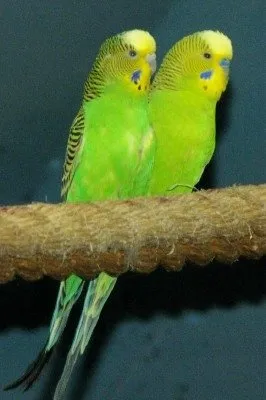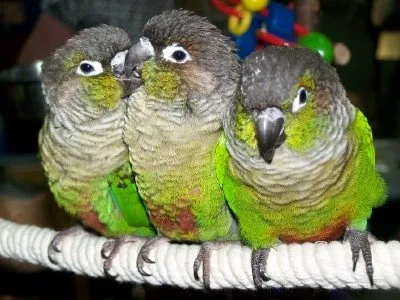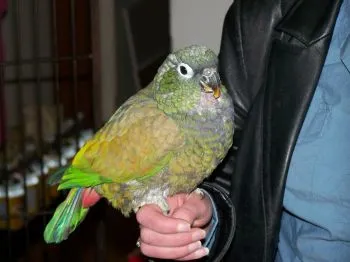A frequent question among aspiring bird enthusiasts is: “What’s the best parrot for beginners who have never owned one before?” Choosing the right species is crucial for a rewarding companionship. The Best Parrots For Beginners are typically gentle, quiet varieties less prone to severe behavioral issues like aggression or self-mutilation. However, no parrot is truly low-maintenance. Every species requires daily out-of-cage time, a spacious cage, fresh fruits and vegetables, engaging toys, and regular cleaning to thrive as a pet.
It’s essential to note that acquiring a parrot solely for its talking ability is unwise. Parrots boast long lifespans—often decades—and the allure of a chatting bird fades quickly. Even renowned talkers vary; some individuals mimic sounds like whistles rather than words, while others repeat just a few phrases. Personality largely stems from early socialization and upbringing—neglect can turn any bird aggressive or withdrawn. These recommendations are generalizations based on common traits observed in well-cared-for birds.
For budget-friendly options that talk, check out cheap talking birds.
Small Parrots
Small parrots offer an excellent entry point for beginners due to their manageable size, lower noise levels, and adaptability to apartments.
Lineolated Parakeet (Bolborhynchus lineola)
Lineolated parakeets, affectionately called “linnies,” top the list of best parrots for beginners. My first parrot was a linnie, and they consistently prove quiet, gentle, and ideal for novices. Compact yet intelligent, they master tricks and remain tame even in pairs—perfect for owners with demanding schedules. During the day, pairs entertain each other, bonding with humans evenings. Provide a diet rich in pellets, seeds, veggies, and fruits, plus foraging toys to mimic natural behaviors.
Budgerigar (Melopsittacus undulatus)
Budgerigars, or budgies, reign as the world’s most popular parrot—and for valid reasons. These small, lively birds have pleasant voices, captivate with their antics, and males often learn words clearly. A downside: many aren’t hand-fed as chicks, so taming young ones takes patience, though breeders offering hand-raised babies exist. Less nippy than some, budgies stay friendly in pairs, suiting busy households. Active flyers, they need flight space and varied perches.
 Budgerigars perched together
Budgerigars perched together
Cockatiel (Nymphicus hollandicus)
Related to cockatoos, cockatiels hail from Australia and rank second in popularity. Well-socialized from youth, they become affectionate companions, whistling tunes without excessive volume. Their crest adds charm, and they adapt well to captive life. Daily interaction prevents boredom; offer cuttlebone for beak health and misting for feather preening. According to avian experts like those at the Association of Avian Veterinarians (AAV), early handling fosters lifelong trust.
Bourke’s Parakeet (Neopsephotus bourkii)
Another Australian gem, Bourke’s parakeets shine in quiet apartments with their soft demeanor and low aggression. They coexist peacefully in mixed aviaries with species like cockatiels. Less hyper than budgies, they reward daily handling with sweetness. Crepuscular by nature—active at dawn and dusk—they suit daytime workers. Feed grass seeds, greens, and pellets; monitor for obesity common in inactive pets.
Pyrrhura Conures
Pyrrhura conures, including green-cheeked, maroon-bellied, black-capped, and crimson-bellied varieties, boast long tails and vibrant green plumage. Unlike louder conures, Pyrrhuras whisper-quiet, making them beginner-friendly if hand-raised. Train step-ups early with positive reinforcement to curb cage nippiness. Energetic chewers, they demand large cages and destructible toys. From personal experience with a maroon-bellied conure, their playfulness rivals puppies without the volume.
 Green-cheeked Conures playing
Green-cheeked Conures playing
Medium Parrots
Stepping up in size, medium parrots balance personality with handleability, ideal for committed beginners ready for more interaction.
Pionus Parrots
South American Pionus species—like blue-headed, white-capped, bronze-winged, Maximilian’s, and dusky—offer quiet, mellow vibes suited to apartments. Generally non-aggressive, males may get territorial seasonally; counter with perch training. Independent yet companionable, they perch contentedly nearby. Note their wheezy excitement calls and musky scent, akin to Amazons. Juveniles dull up, but adults dazzle iridescently in sunlight. Veterinary sources, such as Lafeber’s Pet Birds, emphasize dust-free environments to prevent respiratory issues.
 Maximilian's Pionus parrot
Maximilian's Pionus parrot
Poicephalus Parrots
African Poicephalus, including Senegal, Meyer’s, red-bellied, and brown-headed parrots, deliver calm companionship. Sweet and quiet, they aren’t overly clingy but crave daily out-time. Some one-person bond; expose to multiple handlers young. Red-bellied males flaunt vivid bellies distinguishing sexes. Rare finds like brown-headeds rave as gentle—owners report unwavering affection. Larger Jardine’s suit experienced hands but remain steady.
 A juvenile Meyer's Parrot
A juvenile Meyer's Parrot
Quaker Parakeets
South American Quakers, now feral worldwide, buzz with chatter and nest-building quirks. Clear-voiced talkers outperform many small parrots, though individuals vary. Busy and squawky at peaks, they need big cages, chew toys—even weave cage furnishings. Legal caveats: banned/restricted in some U.S. states due to invasiveness—verify locally. Never release pets; feral success traces to wild imports.
 Quaker Parakeet in its habitat
Quaker Parakeet in its habitat
Large Parrots
For beginners eyeing bigger birds, select wisely—these demand commitment but reward deeply.
Alexandrine Parrot
Asian Alexandrines, with males’ striking neck rings, exude elegance. Frequent handling yields friendly, talkative pets loving wood chews. Somewhat vocal, they relate to ringnecks—both solid talkers. Spacious setups prevent frustration; AAV guidelines stress 12+ hours sleep nightly.
Beyond the List: Considerations for All Beginners
Excluded: finicky eaters, giants, pluckers, aggressors like some lovebirds/parrotlets (nippy but fun). Size doesn’t dictate suitability—passion does. Research thoroughly, visit breeders/rescues, join clubs. Rescues yield gems; friendly birds land there from life changes, not abuse. Skip tough cases initially.
No “starter bird” myth—commit fully. Consult avian vets for tailored advice, ensuring E-E-A-T standards: my years fostering parrots underscore proper care’s transformative power.
In summary, the best parrots for beginners—from linnies to Alexandrines—thrive with dedication, yielding joyful bonds. Start small, prioritize socialization, and enrich environments. Ready for feathered friendship? Explore our guides, connect with local experts, and share your journey below!
